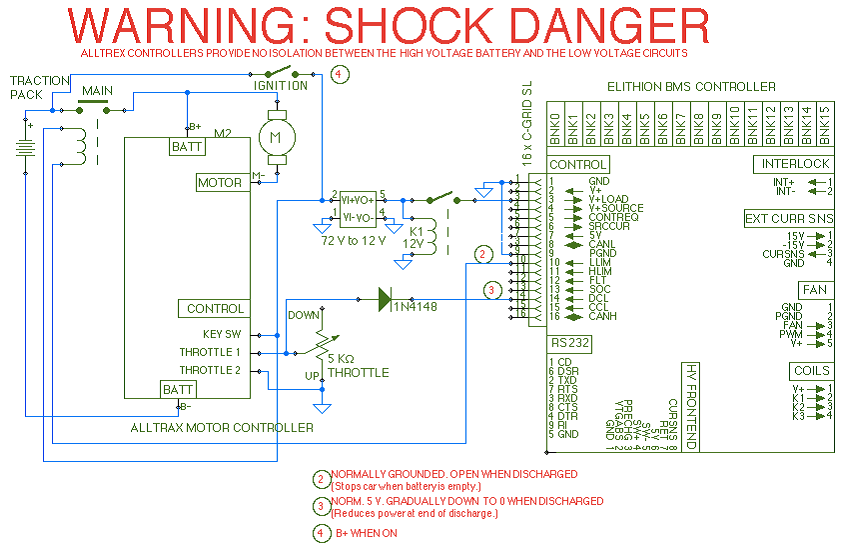
Lithiumate™ Manual |
|
index Alltrax Using a Alltrax motor controller with an Lithiumate BMS. 
WARNING: SHOCK DANGERThe Alltrax motor controllers do not provide isolation between the high voltage battery and the low voltage circuits. The B- terminal is the common ground, as is the "Throttle 2" terminal. The "Throttle 1" terminal has an internal pull up to an internal 14 V supply. When loaded with a 5 kOhm throttle pot, that voltage drops to about 3 V (full throttle) down to 0 V (stopped). Note that the Alltrax controllers have not filtering whatsoever, so it is an exceptionally high source of noise, so you may have some difficulties with the BMS. 
Interfacing a Alltrax motor controller and the Elithion BMS The DC-DC converter provides 12 V for the BMS. Its output drops too slowly, so a relay is added to get a sharp turn off of the 12 V supply. Without the relay, the BMS controller may not store the SOC at turn off. The DCL line from the Lithiumate normally sits at 5 V; when the battery is close to empty, it starts going down. The diode clamps the maximum voltage across the throttle pot, so, as the battery gets more and more discharged, there is less and less available range in the throttle pot, and therefore the torque is limited, giving the driver feedback that there isn't much energy left. The LLIM line is normally grounded (its polarity is flipped from the default) and is the return for the Main contactor. Should the pack go empty, the LLIM line is opened, turning off the Main relay, shutting down the Alltrax. | ||
© 2008~2025 Elithion™, LLC. All rights reserved, except where noted by CC mark. Page published on May 07 2024.
The Elithion brand and the 'ə' (upside down 'e') logo are Trademarks of Elithion LLC. Graphic design by morninglori